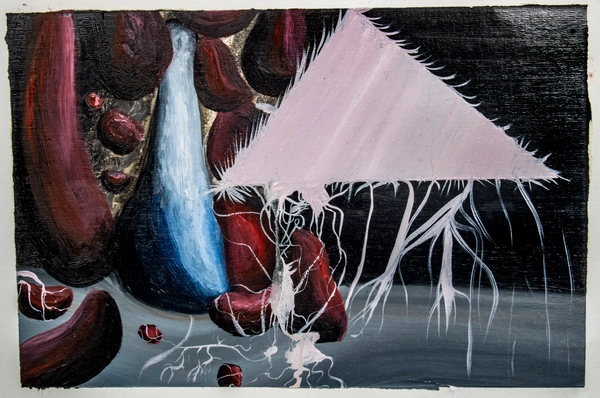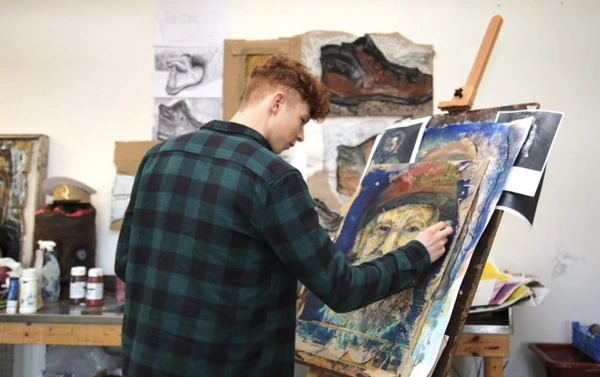Assessment method:
60% coursework, 40% examination. All units are practical
Length of exam: A level – 15 hours of unaided, supervised time
Students are be introduced to a variety of experiences that explore a range of fine art media, processes and tech- niques within both traditional and new media. Exploring the use of drawing for different purposes, using a variety of methods and media on a variety of scales students will use sketchbooks/workbooks/journals to underpin their work where appropriate.
Students will be encouraged to explore relevant images, artefacts and resources relating to a range of art, craft and design, from the past and from recent times which are integral to the investigating and making processes. Responses to these examples must be shown through practical and critical activities that demonstrate an under- standing of different styles, genres and traditions.
Areas of study
Students are required to work in one or more area(s) of fine art, such as: • drawing and painting
• mixed-media, including collage and assemblage
• sculpture
• ceramics
• installation
• printmaking (relief, intaglio, screen processes and lithography) • moving image and photography
Component 1 Personal Investigation
This is a practical investigation supported by written material.
Students are required to conduct a practical investigation, into an idea, issue, concept or theme, supported by written material. The focus of the investigation must be identified independently by the student and must lead to a finished outcome or a series of related finished outcomes. This must be supported by an extended response of between 1000 and 3000 words of continuous prose. The personal investigation will be assessed as a whole.
Component 2 Externally Set Assignment
The question paper will consist of a choice of eight questions to be used as starting points. Students are required to select one. Following receipt of the paper students should consider the starting points and select one. Preparatory work should be presented in any suitable format, such as mounted sheets, design sheets, sketchbooks, workbooks, journals, models and maquettes.
Following the preparatory period, students must complete 15 hours of unaided, supervised time. In this time students must produce a finished outcome or a series of related finished outcomes, informed by their preparatory work.



















